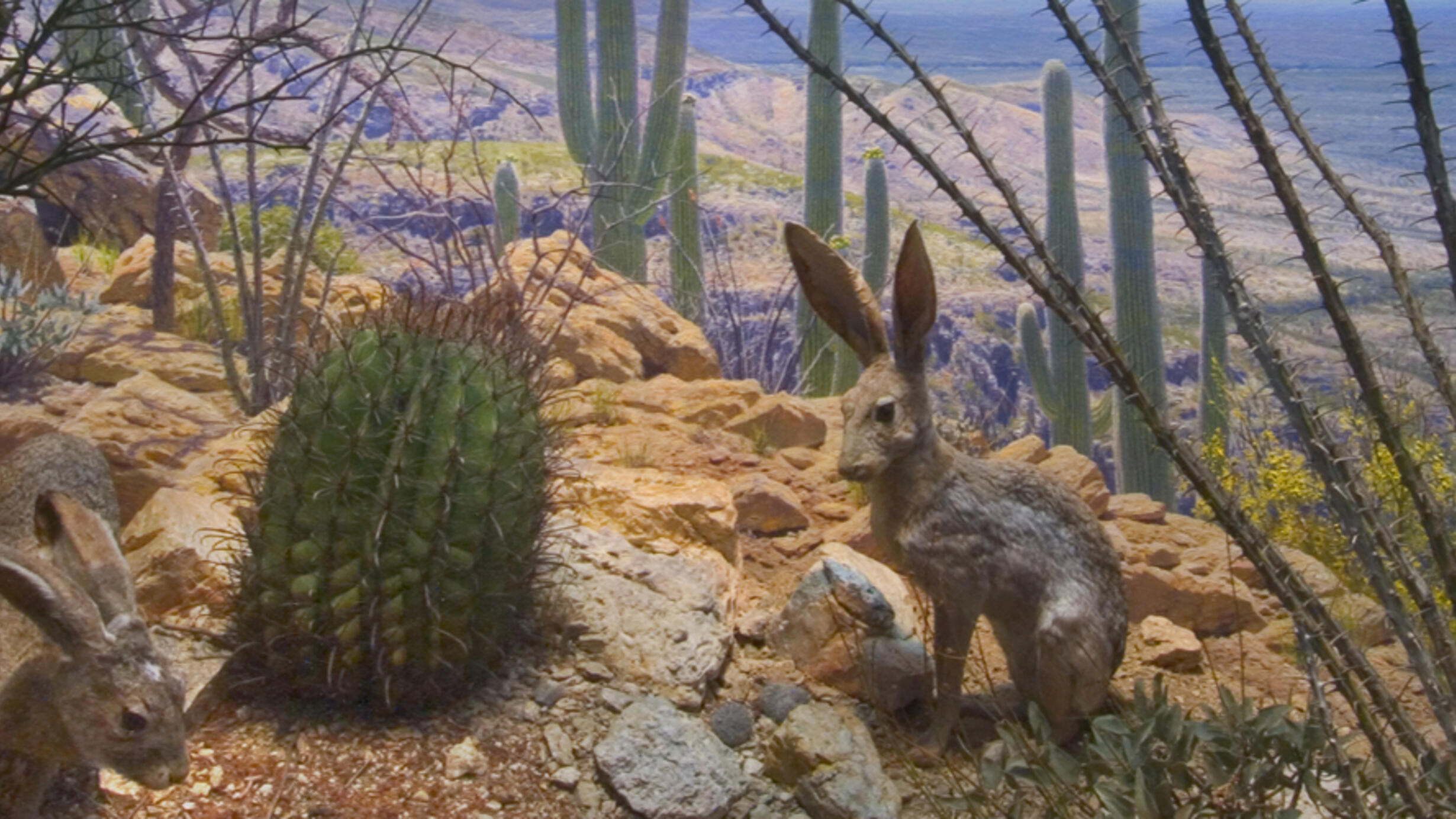Black-Tailed and Antelope Jackrabbits
Part of Hall of North American Mammals.

June at Noon
Near Tucson, Arizona
The black-tailed jackrabbit (left) and antelope jackrabbit (right) are often seen idling or running together in Arizona and Mexico, where their ranges overlap. But make no mistake—these are two different species. Even small traits count. Both hares have long ears and legs, but antelope jackrabbits’ ears are even more enormous. Black-tailed jackrabbits are distinguished by black tails and ear-tips. In a race, the antelope jackrabbit would win, reaching speeds of 44 miles (72 kilometers) per hour.
The Dry Life
Sonoran Desert
Southern Arizona
Here in the desert near Tucson, rainfall averages only 12 inches (30 centimeters) a year. But that is enough for hundreds of species to flourish, all adapted to scarce water and hot days.
Their main strategy is to avoid the sun. Most desert animals are nocturnal. During the day, burrows, crevices, even spiny shrubs offer shade. The jackrabbits resting here have long ears with blood vessels close to the skin to shed body heat. Their long legs help keep them high and cool. Antelope jackrabbits (right) are so well-adapted to water shortage that they never need to drink—they simply eat water-storing plants like cacti.